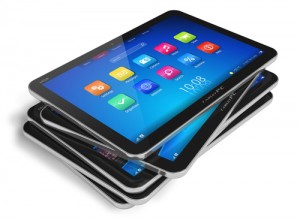I watched a webinar that talked first hand with educators from Hillsborough Township Public Schools in New Jersey, who have gone 1:1 with Google for Education solutions across their District. District is committed to providing a superior education for its students, to build their passion for learning and prepare them for future careers.
With Google for Education the children use technology to collaborate their learning through devices such as tablets, laptops, and smartphones. Another great thing about Google for Education is that it is completely free providing schools with a tool that is easy on your wallet.
Teachers everywhere have been transforming their classrooms into ones in which are technology friendly. I chose this webinar because through observation hours, my teaching practicum, and other classroom experience I have viewed the transformation of technology in the classroom first hand. Students wanting to become teachers today must learn all they can about technology, because children today are growing up with technology all around them and therefore know much more than we do and we need to keep up!
Open technology is the key to education at Google Education and their key is to help students become open to different possibilities. Google Education and Google Play has four tenants: empowerment, choice, teamwork, and scalability. These will make a a student more rounded in technology. Google Play for Education is designed for learning, made in the classroom. It has never been easier to deploy, discover, and deliver. However, teachers will need to adapt the way that they teach to interact these devices by having reliable and secure devices.
I found this presentation very useful for planning my future classroom. Like the video said, in the beginning technology is growing so rapidly that by the time I start to teach there may be more classrooms that integrate technology in the classroom (by having tablets, smartboards, laptops, etc.)
They talk about technology of becoming part of the educational norm, and that we need to use the tool for the better. Hopefully I can use tablets, laptops, and other forms of technology to preform virtual lessons and to globalize the curriculum (e.g. field trips to museums, art galleries, parks, etc. ). Having technology in the classroom would be very useful and I hope to someday have the ability to use it in my future classroom.
Want to watch the webinar? - Here's the link...
http://www.eschoolnews.com/2014/02/25/going-11-google-education-firsthand-experience-tablets-chromebooks/



